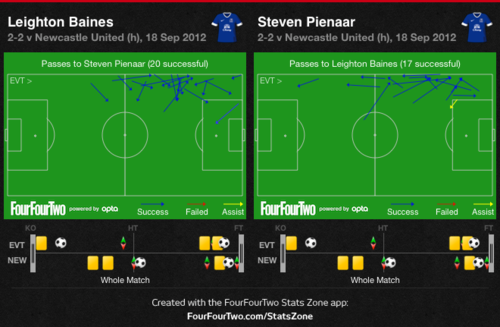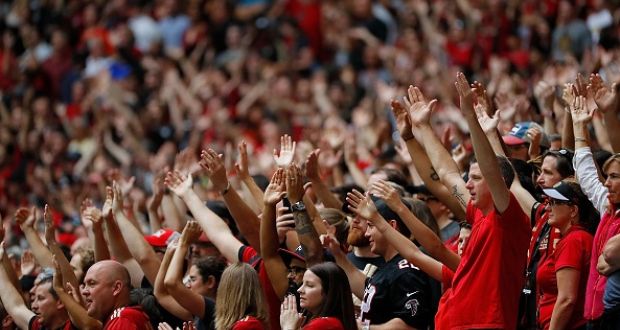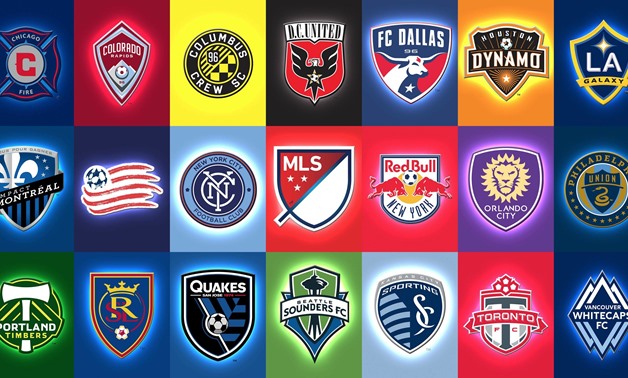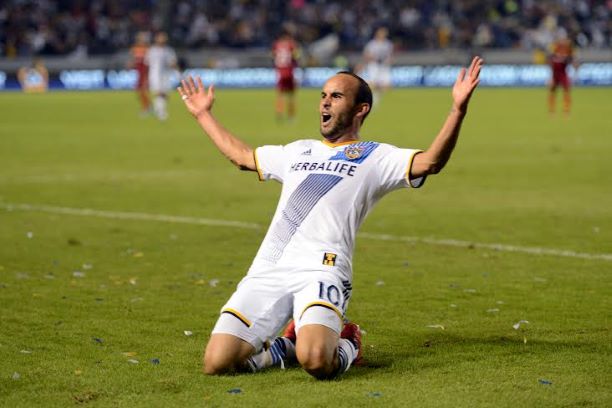Notes from the sideline: The Baines and Pienaar reunion has revitalised the strength of Everton’s attack
Notes from the sideline: The Baines and Pienaar reunion has revitalised the strength of Everton’s attack


By Tim Palmer
The major talking point from Tuesday’s game against Newcastle United was inevitably (and rightfully so) the two blunders by the officials, but although Everton will be aggrieved not to have picked up three points they will take heart from the strength of their left flank.
The Leighton Baines and Steven Pienaar partnership has been a recurring feature of David Moyes time at Everton, and both players have played every game of the new season so far. They were split apart when the South African departed to Tottenham Hotspur in the January transfer window of 2010, but after an unsuccessful stint in London, Pienaar returned firstly on loan halfway through last season and on a permanent transfer at the start of the summer. Curiously enough, the duo has undergone somewhat of a role reversal: as Baines appealed for Pienaar to reject the overtures of Tottenham; similarly this summer Pienaar was desperate for Baines to remain at Everton despite interest from Manchester United. Clearly both recognise the value of their relationship: working in tandem, they’ve re-established what is the most dangerous partnership in the league.
Their relationship is deceptively simple. Baines makes aggressive attacking runs forward from his customary left back position, while Pienaar has a tendency to drift inside, seeking to link up play with the central striker and look for shooting opportunities. Their movement is remarkably synchronised: if Baines cuts inside to narrow the angle for a cross, Pienaar will wrap around the outside. Against teams where the right back is offered poor protection by his winger, as was the case against Newcastle where Sylvain Marveaux failed to track his runner and was promptly removed at half time, Baines and Pienaar can dominate a game by creating 2v1 situations in that zone. Together, the duo accounted for the top two passing combinations (Baines played twenty passes to Pienaar, with the inverse combination occurring seventeen times). Their remarkable knowledge and understanding of each other was crystallised in the game’s opening goal, which came from clever build up play in the left channel: Baines drove in towards the penalty box and scored with a fantastic drive after a brilliant piece of back-heeled improvisation from Pienaar.

Often, central attacker Marouane Fellaini will also drift out into that channel to receive the ball either aerially or to feet. Against Manchester United, he and Baines recorded Everton’s primary passing combination. His physical presence can create clever overloads, as was the case against Manchester United, where Everton’s defenders made full use of his aerial ability by sending long balls into the channel patrolled by the weak United defenders Michael Carrick and Antonio Valencia, who were unable to deal with the pressure.

The benefits of this strength on the left knocks on to the rest of the side, with Nikica Jelavić in particular benefitting greatly, as he likes to make near post runs near the edge of the penalty area to finish in the opposite corner, and that movement was especially prolific at the start of his Everton career. On a broader note, Everton’s attack appears significantly more fluid than it has in years, with Belgian Kevin Mirallas able to play in any position across the attacking third (he offered direct dribbling down the right flank against Newcastle). Everton took the somewhat surprising step to offload Tim Cahill to the New York Red Bulls this summer – the Australian may have been a terrace favourite on Merseyside, but he is a limited player; only really suited to a central role and a specific style of play. That gave Everton a reputation of being hard to beat and tenacious, but their positive start to the season is perhaps suggesting they can match results with entertainment.
Tim Palmer will be talking tactics here on AFR every so often in ‘Notes from the sideline’ . You can follow Tim on Twitter here.







